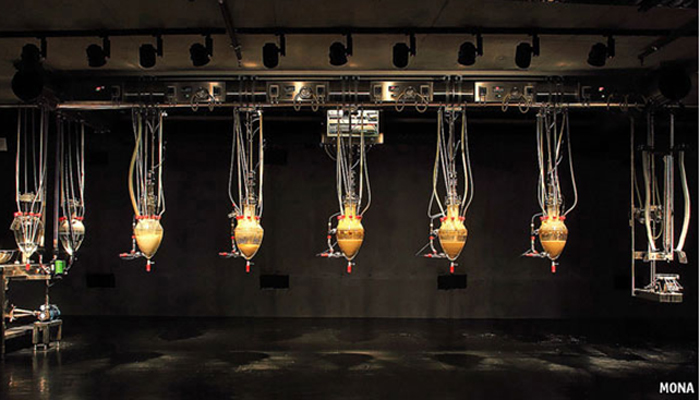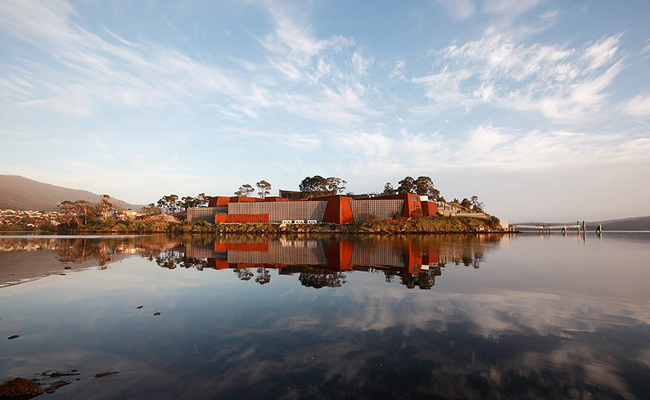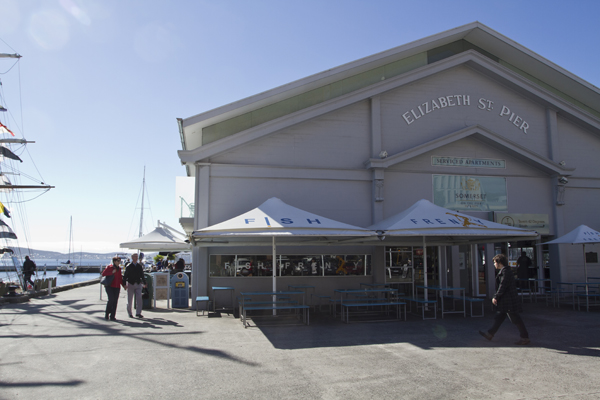I was going to get a tour of MONA from Delia Nicholls, a delightful research curator, but when she came to greet me she told me that she only had an hour or so and then had to go to a funeral for an old friend, another art patron. So instead of walking around, we sat down at the museum’s wine bar for a light lunch and some conversation. I like Delia. She’s very up front. For instance, when I originally talked with her, I asked if I might be able to meet the museum’s owner, David Walsh.
“Not possible,” she said. “David doesn’t particularly like people.”
Since I don’t particularly like people either I was sympathetic.
Over lunch Delia told me that working for David could be “challenging.” She said David personally hired her for her job as curator but then would never say hello when they passed each other. After several months of this she stopped him and asked him if she’d done something to offend him. “He had no idea who I was. He told me he didn’t pay any attention to people’s faces. He doesn’t relate to people that way. He’s a mathematical savant and everything to him is numbers…and he sees numbers as colors.”
She also said David built the museum to follow his passion. “It’s not a museum where you’ll be talked down to or expected to feel a certain way about the art. You’ll just either like it or you won’t. And it doesn’t make any difference to David one way or the other. He’s not trying to convert you.”
She then hurried off to her funeral and I hurried off to see what she and others call the “poo machine,” an installation by Belgian artist Wim Delvoye properly titled “Cloaca,” that simulates the human digestive system. Regular food is shoveled into a long, transparent mouth, travels through a number of agitated glass bowls, and ends up as turds which are pushed through a cylinder and onto a plate promptly at two every afternoon.
Delia told me that the poo machine was at the very bottom of the museum, three floors below ground level, so I hurried down the stairs, through several dark galleries, having no idea where I was going, until I realized I was lost. “Excuse me,” I asked one of the attendants, “can you tell me how to get to the poo machine?”
Never thought I’d be asking that question.
Two minutes later, I found it. Several people were standing around the end of this odd contraption, waiting for the turds to fall. We all waited and waited. About fifteen minutes after two, a tall, blond attendant came into the gallery to have a look at the machine. “I’ve never seen this before,” he said. “It always poos at two o’clock. This is very unusual.”
The attendant got on his two-way radio and reported to someone upstairs that no turds had come from the poo machine. A crackly voice on the other end told him to stand by.
A few minutes later, two middle-aged women in museum uniforms turned up. Everyone, including me, stared at the poo machine. “It didn’t poo at all?” asked one of the women.
“I don’t think so,” said the tall blond attendant. “Did anyone see any poo?” he asked those of us standing around. We all shook our heads.
“Very unusual,” said the woman.
“I’ve never seen this,” said the tall attendant. “It always poos.”
But evidently not today. Seems the poo machine was just a little backed up. I patted the stricken tall blond attendant on the back. “It’s alright,” I told him. “It happens to the best of us.”
And with that I went off to see what else was of interest in the museum.







Recent Comments